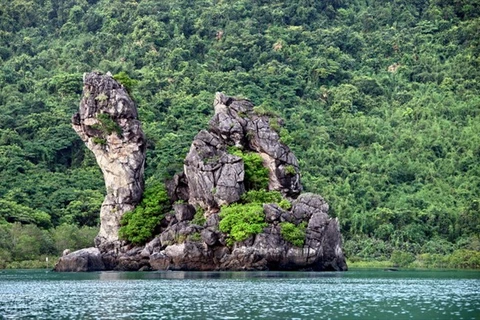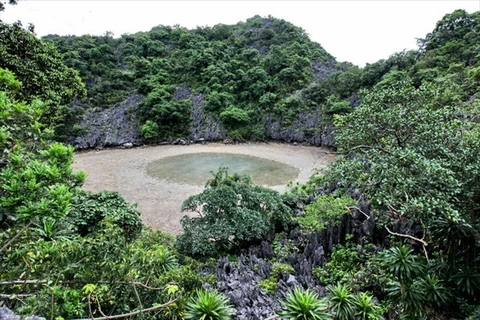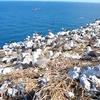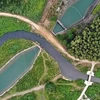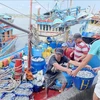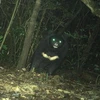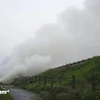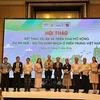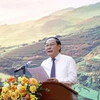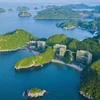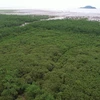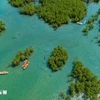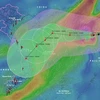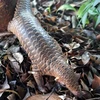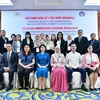Hanoi (VNA) – Bai Tu Long National Park in the northern province of Quang Ninh has proven to hold significant biodiversity values, with great efforts having been made to conserve them.
Pham Xuan Phuong, head of the marine and wetland conservation division at the Vietnam Environment Administration, said that Bai Tu Long National Park owns prominent natural values in the northeast of Vietnam, including high biodiversity, pristine landscapes, and a clean environment. It was recognised as an ASEAN Heritage Park on September 30, 2016.
The park, founded in 2001, covers more than 15,780ha in the Minh Chau, Ha Long, and Van Yen communes of Van Don district, including 6,125ha of over 80 islands and islets and almost 9,660ha of sea surface. It is one of the seven national parks in Vietnam with both forest and marine ecosystems.
As of December 2017, 2,235 creature species were found in this park, including 992 terrestrial species and 1,243 marine ones. Up to 108 of them were named in the Red List of Threatened Species of the International Union for Conservation of Nature (IUCN) and the Vietnam Red Data Book.
The park is home to a diversity of ecosystems such as the tropical broadleaf evergreen forest on earth and limestone mountains, freshwater springs, coral reef, mangrove forest, seaweed, and littoral zone.
Its outstanding biodiversity values are reflected through three aspects, including representation, as seen in the aforementioned representative ecosystems. Bai Tu Long also boasts ecological integrity – a unique case among national parks in Vietnam and the world since its ecosystems remain almost untouched, while ecosystems around the globe have been facing severe fragmentation.
Another outstanding aspect is the uniqueness, which can be seen most clearly in Tra Ngo Lon Island. This island has a special geological structure as its northern area, comprised of more than 400ha, forms with earth mountains and the southern area, over 1,100ha, limestone mountains. These two earth and limestone mountain ecosystems are joined by “tung” (expanding valleys inundated by the sea) and “ang” (sunk cluster depressions) which also harbour a mangrove forest ecosystem that was assessed as the most unique in Southeast Asia by experts of the ASEAN Centre for Biodiversity.
With such biodiverse treasures, the management and protection of natural resources and the environment have been named the leading tasks in Bai Tu Long National Park.
Biodiversity surveys of marine ecosystems have been conducted annually to monitor their development, while the seawater environment has also been analysed to serve the management work.
The park has carried out several scientific studies and gained initial economic benefits such as those on the farming of “hai sam trang” (Holothuria scabra, a species of sea cucumber), “sa sung” (Sipunculus nudus Linnaeus, 1766, a type of marine worm), and “ngao o vuong” (Periglypta puerperal Linnaeus, 1771, a species of clam).
 A worker feeds monkeys at the animal rescue centre on Ba Mun Island of Bai Tu Long National Park (Photo: VNA)
A worker feeds monkeys at the animal rescue centre on Ba Mun Island of Bai Tu Long National Park (Photo: VNA) Various communication activities have been implemented to raise public awareness of wildlife conservation, including the publication of books, newspapers, and leaflets; organising contests and meetings; opening a community-based education centre and a biodiversity museum; and encouraging aquaculture farmers and fishermen to commit to environmental protection regulations and methods.
Meanwhile, a plan on sharing interest in the sustainable management, exploitation, and development of natural mollusc resources in the wetland areas of Bai Tu Long National Park has been carried out for nearly five years, helping to ensure the maintenance of both the environmental conservation and stable livelihoods for locals. The density and reserves of the marine species in this project has increased four- or five-fold. Local residents’ income has become more stable, about 6–7 million VND (250–300 USD) per capita per month.
The park’s management board is expanding the plan to all littoral zones and more marine species of Bai Tu Long. –VNA
VNA



